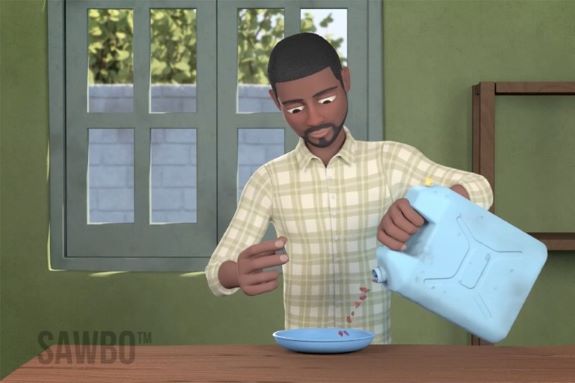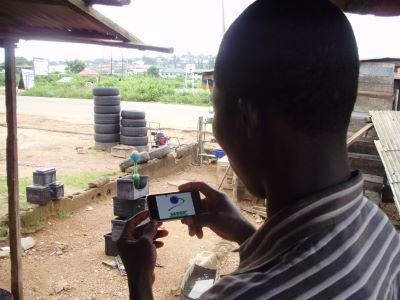Land Grant Model Inspires Modern Day Approach During COVID-19 and Anticipated Global Food Crisis

The land grant model must adapt to address the needs of society. Among the most critical of these needs is one of the most basic; the need for food security.
Food security during COVID-19
First established over 150 years ago, land grant universities such as Michigan State University (MSU) are dedicated to solving problems and providing knowledge that people need to work productively, succeed individually, and contribute to the common good of their communities.
Over the years, this land grant model has expanded to respond to ever greater challenges around the globe. The COVID-19 crisis and impending food crisis has instilled fear, uncertainty and misinformation world-wide, the need for immediate and accurate information and education transfer is crucial.
Through the traditional land grant model, this information would be developed and disseminated through an extension system that relies heavily on interpersonal and in most instances face-to-face interactions. However, the coronavirus has halted travel, quarantined people, and changed the way we work, interact and communicate.
Yet, the land grant model must adapt to address the needs of society. Among the most critical of these needs is one of the most basic; the need for food security. With food security concerns imminent with the spread of the COVID-19 pandemic, safe and effective solutions need to be developed and disseminated immediately.
Screenshot from the SAWBO video "Jerrycan Bean Storage." Animations such as these provide critical information and easy techniques as communities face food security threats.

Screenshot from the SAWBO video "Jerrycan Bean Storage." Animations such as these provide critical information and easy techniques as communities face food security threats.
Scientific Animations Without Borders
Scientific Animations Without Borders (SAWBO), launched almost a decade ago at the University of Illinois at Urbana-Champaign and now based at MSU, has at its core the original intent of the land grant mission to share solutions to its citizens; but extends this mission to include serving the approximately 800 million low literate learners globally who speak diverse languages and many who live at the bottom of the economic pyramid.
SAWBO has created video content in over 145 languages on over 90 topic areas including health, agriculture, and women’s empowerment. As a direct output of USAID funded Feed the Future Innovation Lab investments, SAWBO has amassed over 41 million known users which have accessed SAWBO content across the globe. However, most unique is that SAWBO exists in a 100 percent virtual environment.


Scientific Animations Without Borders (SAWBO) content is developed in a 100 percent virtual space. An animator works on image development (left). SAWBO co-creators, Dr. Barry Pittendrigh and Dr. Julia Bello-Bravo collaborate, pre-COVID-19 on script ideas with a content expert based in Benin (right).
"It is incredibly important to note that the SAWBO platform collaborates, develops, and creates animated content with no face-to-face interaction necessary," explains Dr. Barry Pittendrigh, SAWBO co-creator and MSU Foundation professor in the Department of Entomology. "This is critical as we navigate our current "new" normal and look ahead to the challenges of critical information sharing in the post COVID-19 world. SAWBO shows real impact and resonates with audiences."
There is extensive research that SAWBO animations provide real results, over 33 peer reviewed publications have been written detailing SAWBO’s impact and success. One study, published in the journal Information Technology for Development, focused on the SAWBO animation, Post-harvest Loss: Jerrycan Bean Storage which details how jerrycans can be used for safe, long term grain storage using eight steps. It showed that two years after being shown the animation, farmers in Mozambique had a 97 percent retention rate and 89 percent adoption of the storage solution.

Jerrycans are commonly used in developing nations and are widely available. When used properly, they can serve as excellent storage for grains, especially important during times of food crisis.
According to Julia Bello-Bravo, the study’s lead author, these results are crucial since developing and deploying scalable educational solutions for audiences in developing countries, many of whom are low literate learners has long been a major challenge.
"We have shown these animated intervention strategies are viable for scaling since they can be produced in the local languages of the farmers and distributed across virtual networks such as smartphones," said Bello-Bravo, assistant professor in the Department of Food Science and Human Nutrition at MSU and co-founder of SAWBO. "This means we can more cost-effectively reach isolated communities who might not otherwise have access to these important solutions."
"Our videos can be adapted to a diversity of cultural scenarios, allowing women, men and a wide range of age groups to view them and learn proper techniques," Bello-Bravo said. "In this study we observed women taking a very active role in learning and sharing the information they gained from the animations. Besides the high retention rate (97 percent), 92 percent of survey participants reported telling an average of 8.4 other farmers about the technique and 55 percent personally demonstrated the technique to an average of 6.35 others."
SAWBO developers know the platform will be critical in sharing information to these hard to reach populations as the world braces for a near certain food crisis as a result of the pandemic. They have already created two animations, in collaboration with Dr. Stephen Esquith, Dean of the Residential College in the Arts and Humanities (RCAH) at MSU, specifically addressing COVID-19 topics. The first, "Protecting Yourself from Coronavirus," was created in less than eight days and is currently available in over thirty different languages. It has been deployed online and is being distributed by partner groups worldwide through virtual platforms.


SAWBO content is easily viewed on cell phones through different platforms including YouTube, WhatsApp groups, or the SAWBO deployer App. A man in Nigeria views a SAWBO animation on his phone (right).
The reason SAWBO can react and provide material so quickly is due to their network of global and local experts. "One of the most powerful things about SAWBO is our ability to tap into a global network of talented people as volunteers," says Bello-Bravo.
"The willingness of these leaders in their fields to volunteer their time and expertise is what allows SAWBO to get content out quickly, accurately and affordably," explains Pittendrigh "And we do this all from the safety of our homes. It’s what’s allowed SAWBO to move into high gear and continue to create this critical content."
The second SAWBO COVID-19 animation which focuses on dispelling regional myths on the virus was created in collaboration with a United Nations communications team and has been released for distribution via network television throughout West Africa. But SAWBO developers believe the biggest contribution to the coronavirus crisis is yet to come.
"Food security, it’s at the crest of the next wave of challenges that this virus will unleash," believes Pittendrigh. "We need to reach people now, to provide them with the knowledge on how store their food, their grains, and seeds they will need for planting, how to survive post pandemic."
The SAWBO library already contains some content on these topics, such as the jerrycan storage video noted earlier. "We can immediately begin translating that animation into more language variants and push it through our distribution network, but we need to expand our reach as quickly as possible," explains Pittendrigh.
"SAWBO animations can be shared by platforms like WhatsApp with people around the world who can in turn, share it," explains Pittendrigh. "Think of it as a way to multiple impact through your social networks. Many people have large global networks, and with a few clicks of a button they can share such content through these networks locally, nationally, and globally. It is a way anyone can have a direct impact in the fight against COVID-19, and many of its consequences, while we all remain safe. We asking people to contact us, so we can forward materials that they can distribute through their online platforms to people throughout the world."
Volunteers to provide translations are also needed, "We are always looking for translators," adds Bello-Bravo. "The process is easy and done from the comfort and safety of your home."